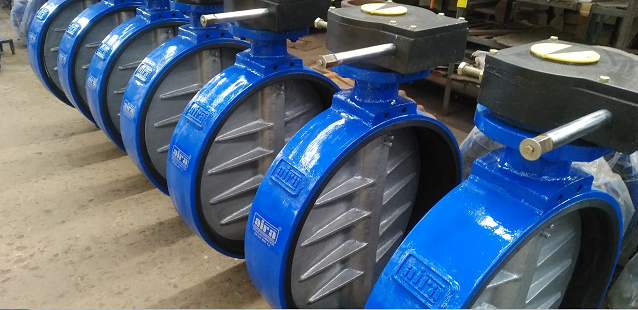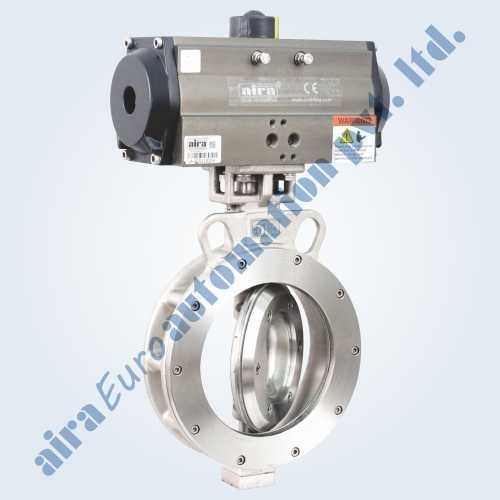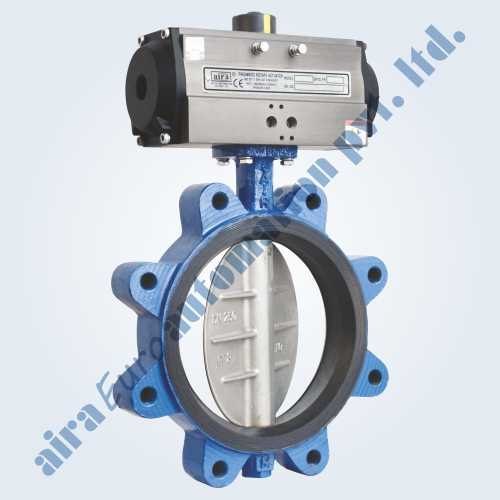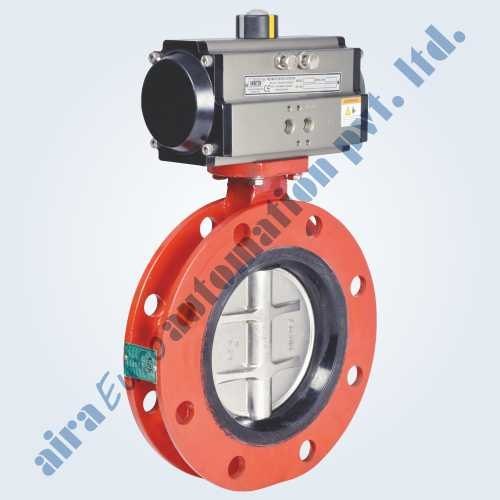Butterfly Valve Types: Usage, Working, Advantage, Triple Offset, Double Flanged

ARE YOU CURIOUS TO KNOW ALL ABOUT BUTTERFLY VALVES? If yes then you are on the correct article. In this article, we examine all the types of butterfly valves. We start with the operating system first and then we go ahead with the mechanism and specification of all kinds of Butterfly valves.
The butterfly valve is a rotary motion quarter-turn valve. This valve can be operated by a manual handle, gear, and pneumatic actuator. Most industrialists prefer pneumatic actuated butterfly valves as they can operate valves in a hazardous environment without any manpower.
Now, let’s focus on the types of Butterfly valves. So first of all we check the basic butterfly valve mechanism and how it works. The butterfly valve is fitted in the middle of the fluid flow pipe. There is a rotational disc connected to a centric stem or shaft and that shaft is connected to the handle or actuator on the other end. This disc rotates quarterly to stop or allow the fluid flow to pass through.
The engineers have designed various butterfly valves to fulfill industrial needs. There are mainly three types of butterfly valves (as per their disc alignment):
- Concentric Butterfly Valve
- Double eccentric Butterfly Valve and
- Triple eccentric Butterfly Valve.
As per body type or end connection, we can distribute them in four types:
- Wafer type
- Lug Type
- Flanged
- Butt Welded.
Let’s explore each type of butterfly valve one by one to know their specifications, advantages, usage, etc.
- Concentric Butterfly valve:
This type of valve is also known as the “Zero Offset Butterfly Valve”. In this type of valve, the disc and shaft are placed centered on the valve seat, as a result, the disc stays constantly in contact with the seat, which reduces the valve life.
This type of disc valve is used to control liquid and gas type media like in Water Treatment plants, Water distribution, Pumping installation, Fire protection, Natural gas & flare gas, etc.
- Double Eccentric Butterfly Valve:
This disc type valve is called a Double Offset Butterfly valve and High-Performance Butterfly Valve. This valve has two offsets from the center. First, the axis of the shaft is eccentric and the backside of the disc and behind the centerline of the sealing point. The second one is, the axis of the shaft is also not in the center of the valve or pipe. When the valve operates, the position of the disc creates a cam action. When the valve is in a fully open position, the disc does not touch the seat which provides a long life to the valve seat.

The double offset butterfly valves are very suitable for thicker media that have high pressure because their unique design prevents contact between disc and seat. This valve is generally used in Power Generation plants, Pulp & Paper industries, Chemical industries, Oil & Gas plants, Water & Wastewater Treatment Plants, and shipbuilding.
- Triple eccentric Butterfly Valve:
This valve is also known as Triple Offset Butterfly Valve. The two offsets are the same as double offsets, and the third one is created by a geometrically designed seat surface. This designed seat and disc create a conical angle, which allows the disc to seal the seat with no friction and come in contact with the shut-off positions. This design in the metal seat provides a bubble-tight shutoff.

The triple offset butterfly valves are very demanding because of the tight shut-off. In all the applications where the double offset valves are used and required for tighter shut-off, this is an ideal butterfly valve for that.
As per the three figures, we can easily get all the points of the Butterfly valve’s working principle. We all know that these valves are fitted in the middle of the pipe, so let’s check out ‘How are butterfly valves fitted in pipelines?’
As we read above there are four types of end connections or body types of butterfly valves that help to be fitted in the pipeline.
Wafer Type Butterfly Valve
This type of butterfly valve is installed between two flanged-ended pipes. As we can see in the below image:

This wafer type butterfly valve fits with the help of studs. The studs go through pipe flanges and tighten the valve between two flanges. This type of valve is useful to prevent any backflow in the system. It is designed to keep a seal against bi-directional pressure.
Lug Type Butterfly Valve
The Lug type butterfly valve also connects in between the flange-ended pipeline. There are threaded inserts on both sides of the valve body. Both sides of the flange-ended pipe connect to these threaded inserts with two sets of bolts without nuts.

This threaded insert setup allows disconnecting one side without disturbing the other one. The lug-type valve can be fitted at the end of the pipe and used as an end valve.
Flanged End Butterfly Valve
This type of valve, Valve has a Flanged body that matches the flanged end pipe and fits with the Nut and Bolts.

The Flanged End Butterfly Valves have threadless inserts on both sides. This design binds the valve to the pipe tightly.
- Butt Weld End
This type of valve ends directly welded to the pipe for high-pressure applications.
Conclusion
These end connections impact directly the valve’s performance. If we select an inappropriate end valve for our application, the valve may start leaking from the joints. All the butterfly valves are used in all types of industrial applications, for High-pressure media and also for High-temperature services.


